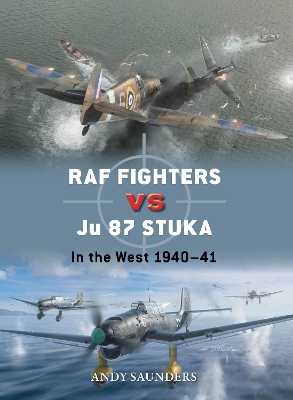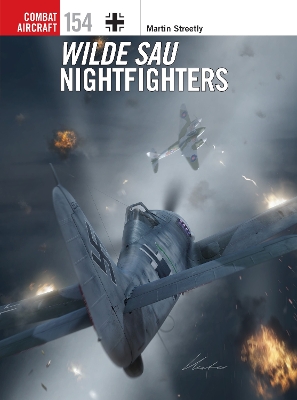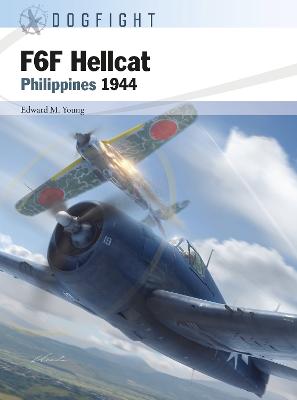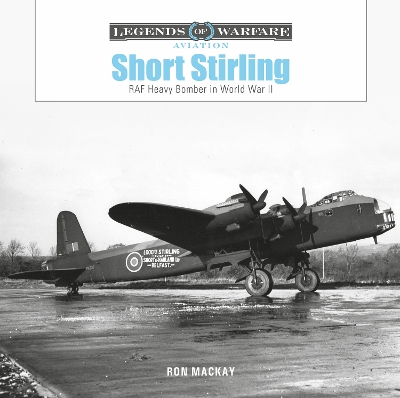To Save An Army
 portes grátis
portes grátis
To Save An Army
The Stalingrad Airlift
Forsyth, Robert
Bloomsbury Publishing PLC
11/2022
352
Dura
Inglês
9781472845412
15 a 20 dias
Descrição não disponível.
Part One: Conquest
- The Demyansk and Kholm airlifts - dangerous precedents, 1941-42
- A summary of the advance of Army Group South (later Army Groups A and B) towards the Don from July 1942 and war aims (to September 1942)
- The role and status of the Luftwaffe in support of German war aims in southern Russia from the summer of 1942, with focus on the Transportverbaende, biographies of the airlift senior commanders such as Milch, von Richthofen, Fiebig, Pickert and Morzik, and the effect of their backgrounds and personalities on events; the transport units, their structures and the Luftwaffe's multi-front commitments
- Detailed descriptions of the six principal transport aircraft used in the Stalingrad airlift: Junkers Ju 52/3m - Heinkel He 111 - Heinkel He 177 - Junkers Ju 290 - Focke-Wulf Fw 200 - Junkers Ju 86
Part Two: Crisis
- A summary of Zhukov's counter-attack, Operation Uranus, launched on 19 November 1942, and the encirclement of Sixth Army four days later
- The decision by Hitler, Goering, Jeschonnek and the German high command to supply Sixth Army by air
- The commencement of airlift (Phase 1 to mid-December), with flights landing at Gumrak and Pitomnik airfields inside the pocket carrying mainly fuel and ammunition; day-by-day description of events, command decisions, flights, effect of weather, enemy reaction and movement, analysis of supplies and tonnages, serviceability, units deployed, weather conditions etc. Mainly fuel and ammunition to 19 December based on Sixth Army requests
- The stalling of the Hoth relief effort (Operation Winter Storm) by 23 December
Part Three: Catastrophe
- Phase 2 and the climactic, doomed airlift from 24 December, with even the main Luftwaffe airlift depot base at Tatsinskaya under threat. Day-by-day description of events, command decisions, flights, effect of weather, enemy reaction and movement
- From 26 December onwards the supply of food becomes the priority over ammunition and fuel
- On 12 January, Pitomnik airfield in the pocket is lost; landings increasingly give way to air-drops as conditions worsen. Gumrak airfield lost on 22 January
- Detail will range from the command decisions in Berlin, to air fleet and corps command-level, to operations by individual transport units
Aftermath and conclusions
Appendices
Index
- The Demyansk and Kholm airlifts - dangerous precedents, 1941-42
- A summary of the advance of Army Group South (later Army Groups A and B) towards the Don from July 1942 and war aims (to September 1942)
- The role and status of the Luftwaffe in support of German war aims in southern Russia from the summer of 1942, with focus on the Transportverbaende, biographies of the airlift senior commanders such as Milch, von Richthofen, Fiebig, Pickert and Morzik, and the effect of their backgrounds and personalities on events; the transport units, their structures and the Luftwaffe's multi-front commitments
- Detailed descriptions of the six principal transport aircraft used in the Stalingrad airlift: Junkers Ju 52/3m - Heinkel He 111 - Heinkel He 177 - Junkers Ju 290 - Focke-Wulf Fw 200 - Junkers Ju 86
Part Two: Crisis
- A summary of Zhukov's counter-attack, Operation Uranus, launched on 19 November 1942, and the encirclement of Sixth Army four days later
- The decision by Hitler, Goering, Jeschonnek and the German high command to supply Sixth Army by air
- The commencement of airlift (Phase 1 to mid-December), with flights landing at Gumrak and Pitomnik airfields inside the pocket carrying mainly fuel and ammunition; day-by-day description of events, command decisions, flights, effect of weather, enemy reaction and movement, analysis of supplies and tonnages, serviceability, units deployed, weather conditions etc. Mainly fuel and ammunition to 19 December based on Sixth Army requests
- The stalling of the Hoth relief effort (Operation Winter Storm) by 23 December
Part Three: Catastrophe
- Phase 2 and the climactic, doomed airlift from 24 December, with even the main Luftwaffe airlift depot base at Tatsinskaya under threat. Day-by-day description of events, command decisions, flights, effect of weather, enemy reaction and movement
- From 26 December onwards the supply of food becomes the priority over ammunition and fuel
- On 12 January, Pitomnik airfield in the pocket is lost; landings increasingly give way to air-drops as conditions worsen. Gumrak airfield lost on 22 January
- Detail will range from the command decisions in Berlin, to air fleet and corps command-level, to operations by individual transport units
Aftermath and conclusions
Appendices
Index
Este título pertence ao(s) assunto(s) indicados(s). Para ver outros títulos clique no assunto desejado.
2nd second world war 2 two; ww2; wwii; Germany; Russia; Sixth Army; Luftwaffe; von Paulus; Soviet; air force; trapped; 1942; 1943; Volga Manstein; transport; aircraft; plane; aviation; diary; journal commander; photograph; strategy; tactics; technology; operation; battle; 20th twentieth century
Part One: Conquest
- The Demyansk and Kholm airlifts - dangerous precedents, 1941-42
- A summary of the advance of Army Group South (later Army Groups A and B) towards the Don from July 1942 and war aims (to September 1942)
- The role and status of the Luftwaffe in support of German war aims in southern Russia from the summer of 1942, with focus on the Transportverbaende, biographies of the airlift senior commanders such as Milch, von Richthofen, Fiebig, Pickert and Morzik, and the effect of their backgrounds and personalities on events; the transport units, their structures and the Luftwaffe's multi-front commitments
- Detailed descriptions of the six principal transport aircraft used in the Stalingrad airlift: Junkers Ju 52/3m - Heinkel He 111 - Heinkel He 177 - Junkers Ju 290 - Focke-Wulf Fw 200 - Junkers Ju 86
Part Two: Crisis
- A summary of Zhukov's counter-attack, Operation Uranus, launched on 19 November 1942, and the encirclement of Sixth Army four days later
- The decision by Hitler, Goering, Jeschonnek and the German high command to supply Sixth Army by air
- The commencement of airlift (Phase 1 to mid-December), with flights landing at Gumrak and Pitomnik airfields inside the pocket carrying mainly fuel and ammunition; day-by-day description of events, command decisions, flights, effect of weather, enemy reaction and movement, analysis of supplies and tonnages, serviceability, units deployed, weather conditions etc. Mainly fuel and ammunition to 19 December based on Sixth Army requests
- The stalling of the Hoth relief effort (Operation Winter Storm) by 23 December
Part Three: Catastrophe
- Phase 2 and the climactic, doomed airlift from 24 December, with even the main Luftwaffe airlift depot base at Tatsinskaya under threat. Day-by-day description of events, command decisions, flights, effect of weather, enemy reaction and movement
- From 26 December onwards the supply of food becomes the priority over ammunition and fuel
- On 12 January, Pitomnik airfield in the pocket is lost; landings increasingly give way to air-drops as conditions worsen. Gumrak airfield lost on 22 January
- Detail will range from the command decisions in Berlin, to air fleet and corps command-level, to operations by individual transport units
Aftermath and conclusions
Appendices
Index
- The Demyansk and Kholm airlifts - dangerous precedents, 1941-42
- A summary of the advance of Army Group South (later Army Groups A and B) towards the Don from July 1942 and war aims (to September 1942)
- The role and status of the Luftwaffe in support of German war aims in southern Russia from the summer of 1942, with focus on the Transportverbaende, biographies of the airlift senior commanders such as Milch, von Richthofen, Fiebig, Pickert and Morzik, and the effect of their backgrounds and personalities on events; the transport units, their structures and the Luftwaffe's multi-front commitments
- Detailed descriptions of the six principal transport aircraft used in the Stalingrad airlift: Junkers Ju 52/3m - Heinkel He 111 - Heinkel He 177 - Junkers Ju 290 - Focke-Wulf Fw 200 - Junkers Ju 86
Part Two: Crisis
- A summary of Zhukov's counter-attack, Operation Uranus, launched on 19 November 1942, and the encirclement of Sixth Army four days later
- The decision by Hitler, Goering, Jeschonnek and the German high command to supply Sixth Army by air
- The commencement of airlift (Phase 1 to mid-December), with flights landing at Gumrak and Pitomnik airfields inside the pocket carrying mainly fuel and ammunition; day-by-day description of events, command decisions, flights, effect of weather, enemy reaction and movement, analysis of supplies and tonnages, serviceability, units deployed, weather conditions etc. Mainly fuel and ammunition to 19 December based on Sixth Army requests
- The stalling of the Hoth relief effort (Operation Winter Storm) by 23 December
Part Three: Catastrophe
- Phase 2 and the climactic, doomed airlift from 24 December, with even the main Luftwaffe airlift depot base at Tatsinskaya under threat. Day-by-day description of events, command decisions, flights, effect of weather, enemy reaction and movement
- From 26 December onwards the supply of food becomes the priority over ammunition and fuel
- On 12 January, Pitomnik airfield in the pocket is lost; landings increasingly give way to air-drops as conditions worsen. Gumrak airfield lost on 22 January
- Detail will range from the command decisions in Berlin, to air fleet and corps command-level, to operations by individual transport units
Aftermath and conclusions
Appendices
Index
Este título pertence ao(s) assunto(s) indicados(s). Para ver outros títulos clique no assunto desejado.







